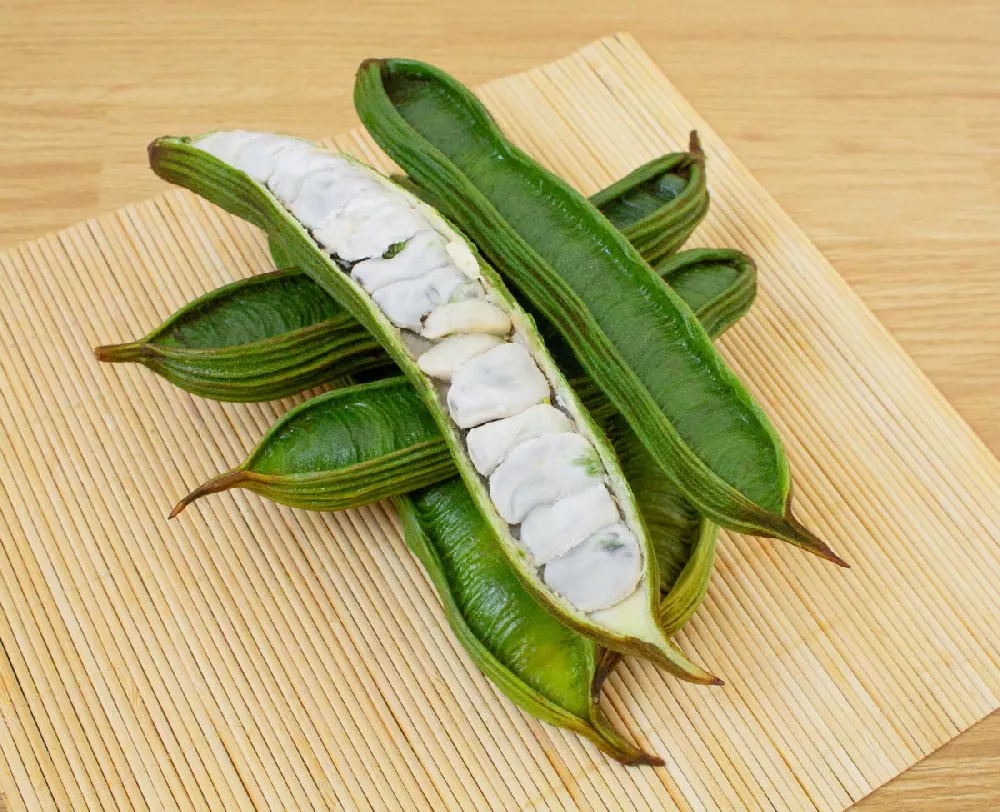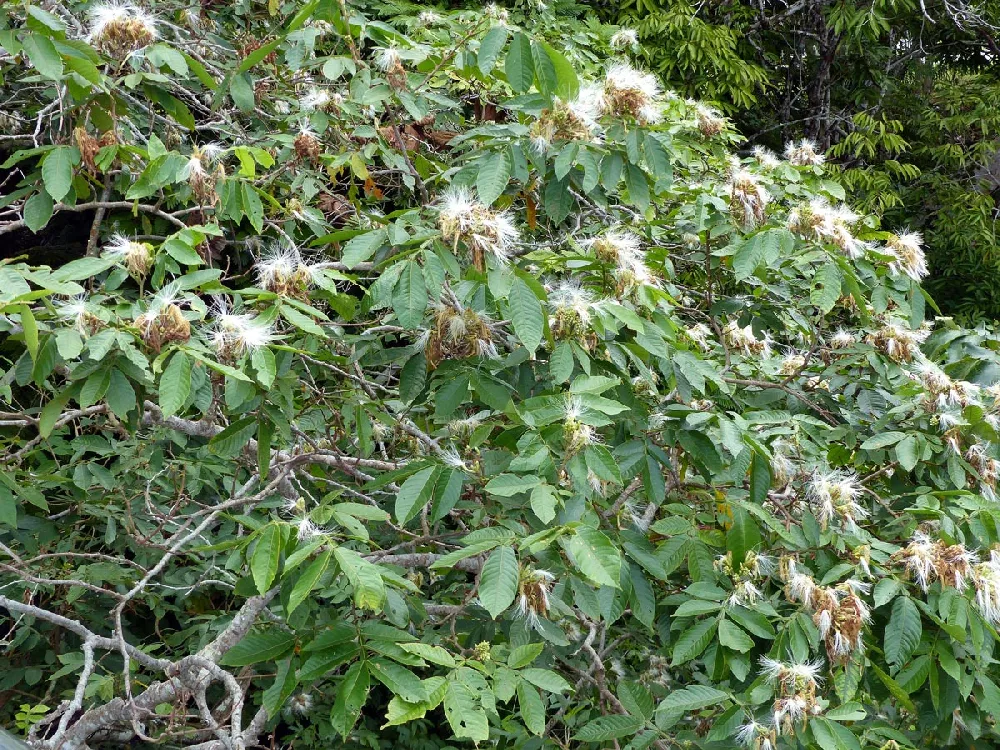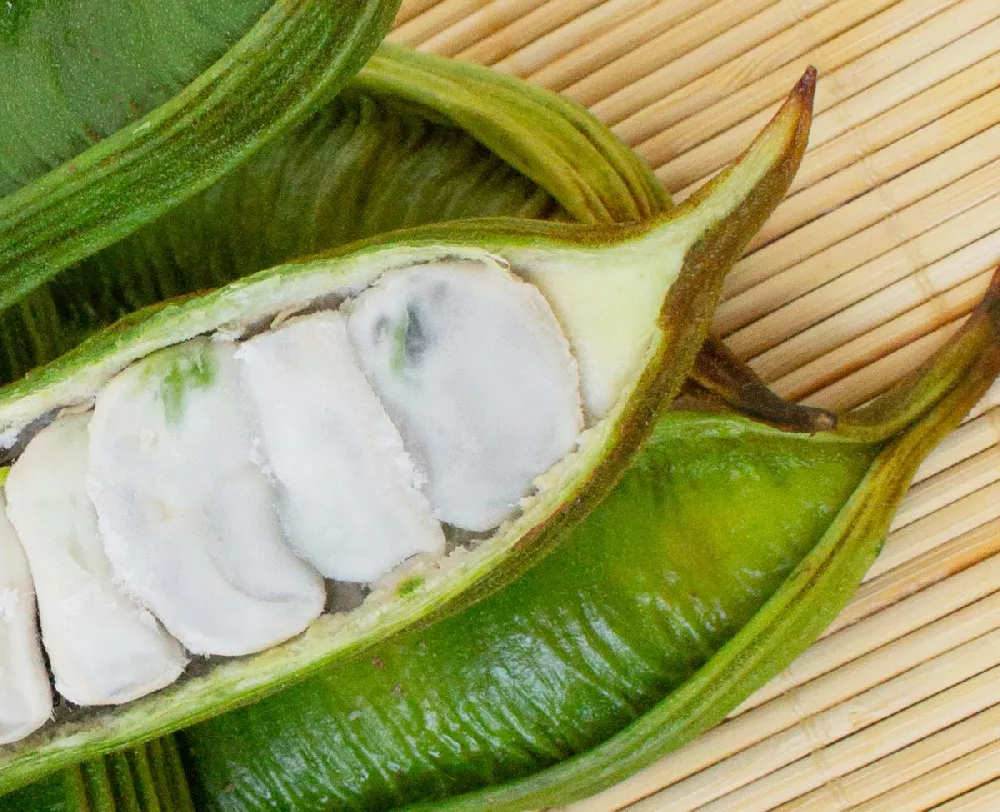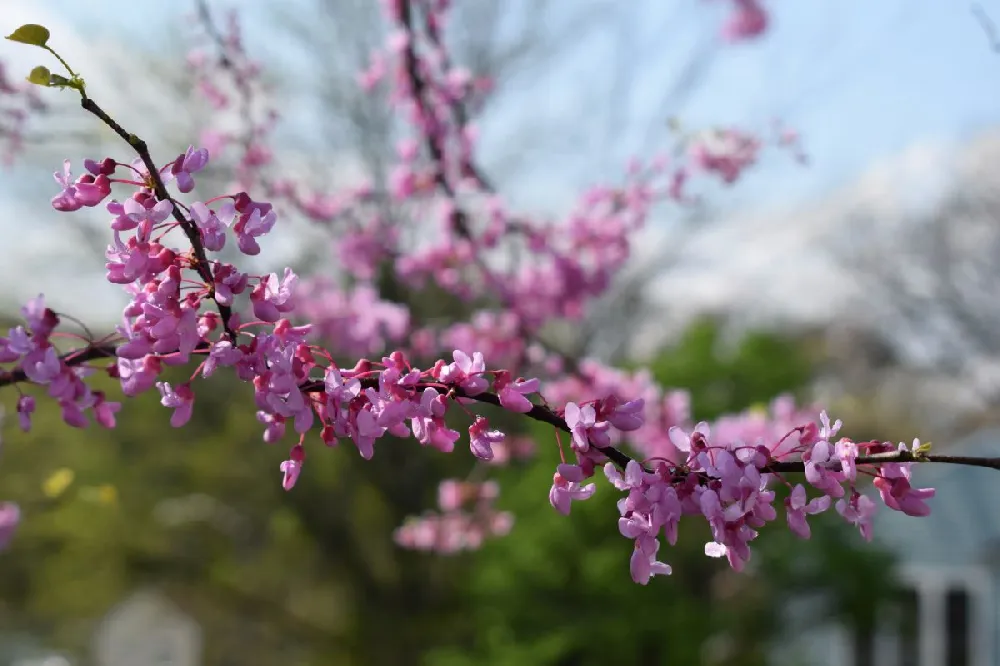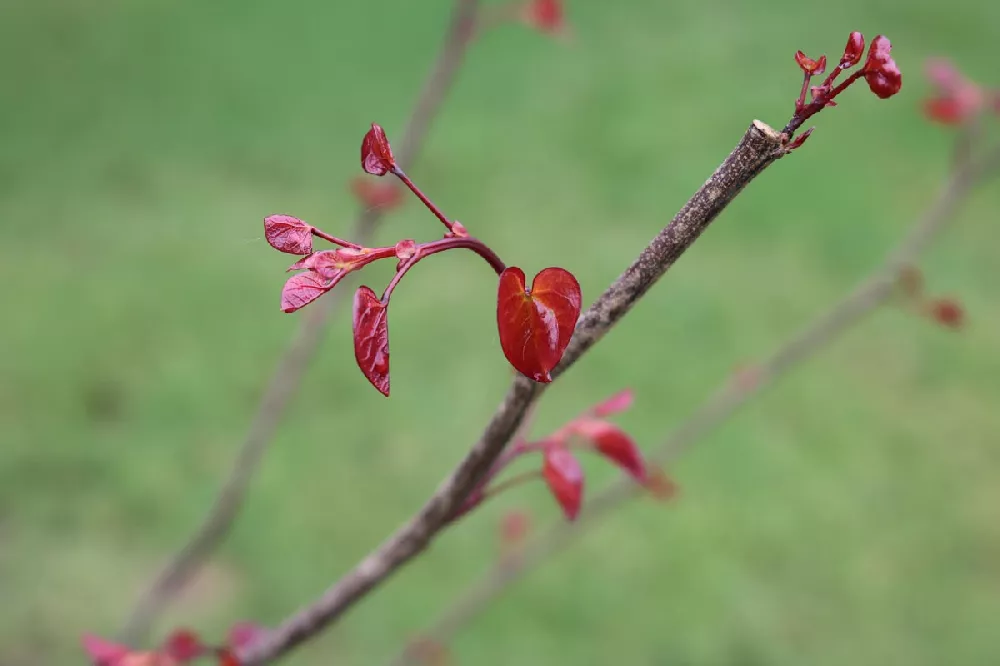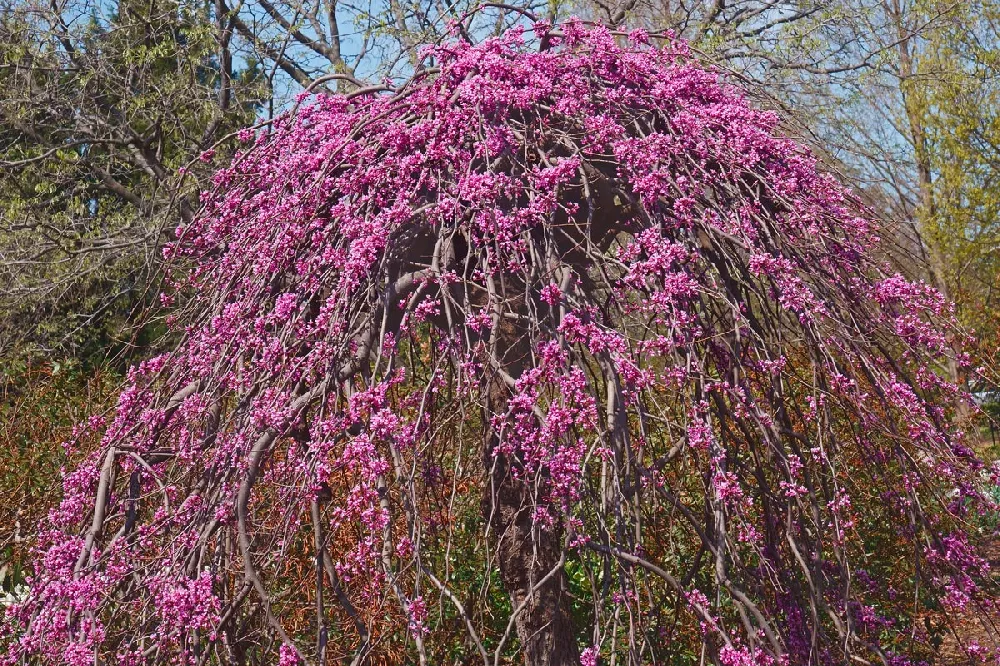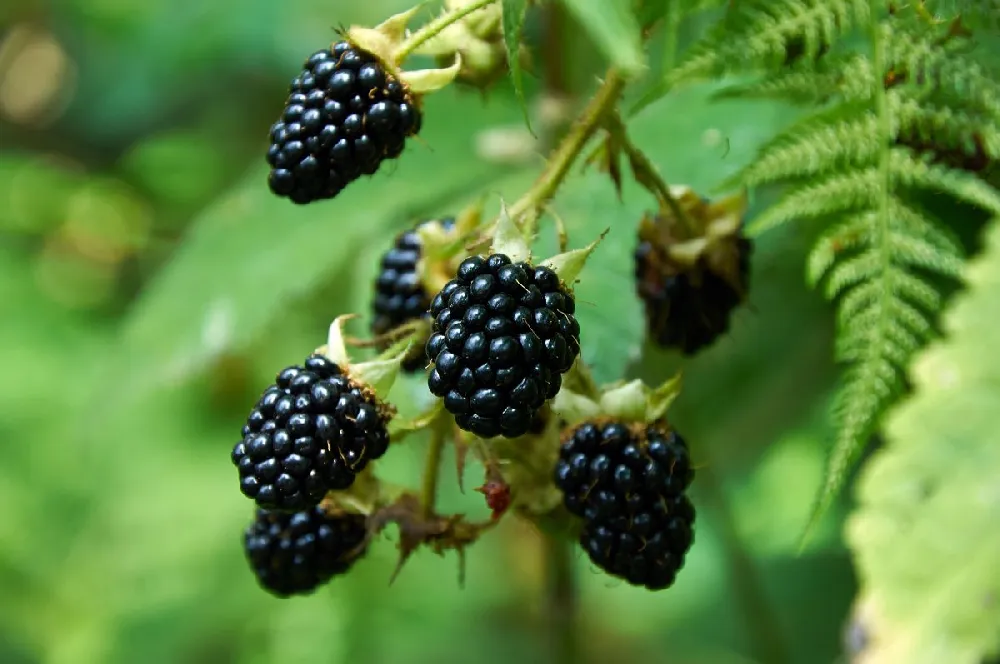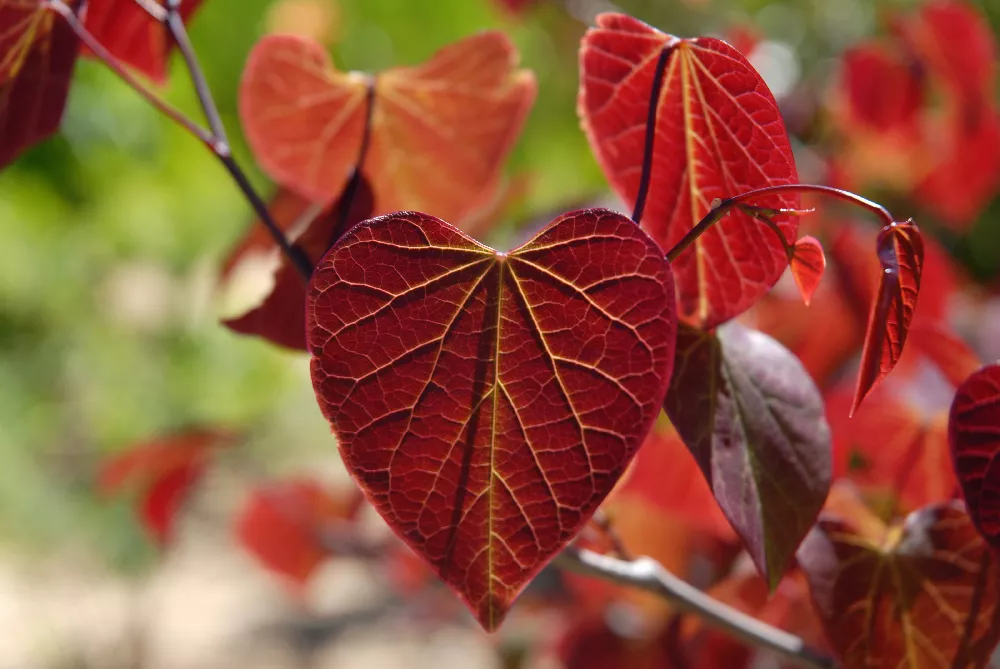- Home >
- Edible Plants >
- Ice Cream Bean Tree
Ice Cream Bean Tree for Sale - Buying & Growing Guide
Beans and other legumes are good for you, of course. And who doesn't like ice cream? Add these two together and you get the unique and delightful ice cream bean tree, Inga edulis. Although it grows as a tree, it actually is a legume, like beans and peas, and so is adept at adding nitrogen to your soil. Its beans grow in pods and feature a flesh that tastes like vanilla ice cream, with the consistency of cotton candy. It's easy to grow, both outdoors and in containers, and stays at a manageable 8 to 10 feet in height. Here are a few more reasons to consider getting your own ice cream bean tree:
- The trees are self-fertile, meaning you can have a harvest even if you only have one tree.
- Established trees are drought-resistant and don't need a lot of supplemental watering.
- Attractive, glossy dark green pinnate leaves make it an eye-catcher in the garden or living room.
Enter your zip code to find nearby stores that may carry this plant.
Plant Care
Sunlight

The ice cream bean tree thrives in filtered to full sun, with at least four hours of direct light a day.
Watering
Water once a week; increase watering in heat waves and during periods of drought.
Fertilizing

Although a light dressing of a balanced fertilizer won't hurt it, a mature ice cream bean tree doesn't need fertilizing.
Planting and Care
Planting instructions
If planted outside, your ice cream bean tree will do best with morning sun and filtered shade in the hot afternoon. It will thrive in soil that drains well, and it prefers sandy or loamy soil to clay. Unpot your sapling and tease out any encircling roots, which can slowly girdle the tree and kill it. Dig a hole that’s as deep as the root ball and twice as wide. Place the tree in the hole and, while holding it steady and upright, fill in around it with topsoil, tamping down as you go to eliminate air pockets. Water thoroughly. Apply a 2- to 3-inch layer of an organic mulch, such as bark chips, around the tree’s root zone to conserve moisture and keep weeds at bay.
Watering and nutrients
When newly planted, water your sapling every few days until you see signs of new growth. At that time, you can cut back to once-a-week waterings. After its first year, your tree won’t need supplemental water unless you’re experiencing very dry or hot weather. Your ice cream bean tree is also easy-care when it comes to fertilizer. As a legume, it “fixes” nitrogen in the soil, enriching it. If your tree isn’t thriving and is losing leaves, however, it may need potassium, so apply a light dressing of a high-potassium product as indicated on package directions.
Pollination
Ice cream bean trees are monoecious, meaning that a single tree has male and female reproductive parts. The flowers feature inflorescences, or clusters of small flowers with obvious long white stamens. These attract insect pollinators, and the pollinated flowers turn into the long, bean-like pods that hold the tasty seed masses.
Pruning
Your ice cream bean tree doesn’t need the severe annual pruning that some fruit trees need. You can prune out dead, diseased, or damaged limbs whenever you see them. In early spring, you may prune the tree to control the shape and size, which may be necessary if you are growing your tree inside. Remove branches that rub against each other, and prune the interior of the tree lightly to open up the canopy to light and air.
Pests and diseases
Ice cream bean trees have few pests and diseases when grown in the U.S. Anastrepha distincta, the Inga fruit fly, may be found in the southern end of its growing region. The larvae of these insects feed on the trees and their fruit and can cause great damage. Basal stem rot can also be a problem, but most healthy trees can fend off an attack.
Harvesting
Harvest your bean pods in summer when they are plump and fully ripe. The best way to determine if they are ripe is to try one and see if it is sweet and ready to be eaten. Harvest by hand or using clippers, and store in a cool place. Don’t leave fallen pods on the ground, as the trees germinate easily and can become invasive if allowed to grow at will.
Achieving maximum results
Although it is a tropical tree, the ice cream bean tree adapts beautifully to container growing and is thus easy to manage north of USDA hardiness zone 9. In northern regions, it makes an attractive and eye-catching patio plant that is brought indoors when the temperatures dip below 30 degrees Fahrenheit. Choose a container for your sapling that is roughly twice the size of the root ball, and plant it in a good quality potting mix. You may need to water it more frequently, especially in a dry house over the winter. You can help keep the humidity high by placing the tree in a tray with water in it and occasionally misting the leaves.
FAQs
Is the ice cream bean tree really related to bean plants?
The ice cream bean tree is a legume, just as pole beans, peanuts, and peas are. Although they are all in different taxonomic families, they share some common traits. All of them, for example, feature seed pods that open along a seam. They all also have structures called root nodules, which allows them to add nitrogen to the soil in which they're grown. For this reason, they are highly prized in agricultural plans that feature crop rotation.
How long will it take my ice cream bean tree to produce fruit?
On average, you should be able to harvest bean pods from your tree about three years after planting, if the tree is healthy and located in a spot that agrees with it.
How do you eat an ice cream bean?
Ice cream beans are usually eaten fresh off the tree. Pick one of the large, bean-like pods and open it up along the side seam. It may take a little effort to crack open the pod — use a knife if there is resistance. Inside, you'll see what looks like a row of cotton balls. These are the fruits of the ice cream bean plant. Pop one in your mouth and enjoy the delicious taste, being careful that you don't accidentally swallow the black seed that is inside that cotton ball.
Compare Similar Products
You can't add more Product Name - Product size to the cart.
OK